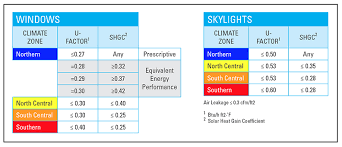
The purpose of window insulation film is to keep the heat out in warmer months and the heat in during cooler months. This may sound like a conundrum, but window film insulation actually works. However, there are multiple variables that should be considered when searching for the right film to insulate windows in your building or store. Helpful hint: your climate and location are just the beginning.
Window insulation film is also known as solar insulation window film. In general, window insulation film is manufactured to reflect UV (Ultraviolet) and IR (Infrared) rays that infiltrate your building, thus increasing the interior temperature. Interestingly, some options also help to maintain heat within a structure during cooler months. Various types of insulated window film fulfill different purposes to different degrees. Thus, you will want to choose the right window film to meet all of the criteria for your building or storefront.
The good news is we did the research for you!
How Window Insulation Film Works
Insulated window film blocks 99% of ultraviolet rays, while allowing 100% visibility. Consequently, your view is improved via a reduction in glare. While your window film is deflecting heat from entering the home, it’s working double time to insulate the glass, keeping cool air in, and your HVAC system from working overtime.
Solar Heat Gain Coefficient and Visible Light Transmittance
An important factor in determining the right window film insulation is the Solar Heat Gain Coefficient (SHGC). The SHGC is a rating system used to gauge a product’s solar performance on a scale of 0 to 1. The lower the number, the less solar heat effects the interior space.
For example, a .03 rating would mean that very little heat was entering the building. While a 1.0 rating would mean that your building was incurring a maximum amount of solar heat. If you are in a warmer climate, pursue a lower SHGC classification. This rating will prove more effective at reducing your HVAC system’s production during the summer. If you live in a cooler climate, look for a higher SHGC rating. This will allow more heat through during the cooler months.

The visible light transmittance (VLT) rating depicts the admittance of more, or less natural light. The higher the number, the more natural light that enters the structure. This can be helpful for deterring interior furnishings fading as well as interior glare. Both the VLT and SHGC ratings can be beneficial in determining the right UV window film for your building.
Low-E Window Film
Low emissivity, or low E, window films are a game-changer. Developed recently in the window film realm, low E window film creates a thermal layer of protection on the interior pane of your windows that reduces heating and cooling costs. With low emissivity window films, clients can improve single-pane performance to double-pane, and double-pane performance to triple-pane. This film is a premier choice for those individuals who live in colder climates.
Low-E means low emissivity. The emissivity is the percentage degree to which heat is reflected back into a room, as well as how much is lost to the outdoors. Thus, the lower the “e-value” the better a film performs in saving energy.
Conventional low-e window film has an emissivity rating of 0.33, which means that 67% of the room’s heat is reflected back into the room in the winter. There are low-e window films available with emissivity ratings as low as 0.07. That results in 93 percent of the room’s heat being reflected back into the space. Traditional low-e window film improves insulating performance of existing windows by 44%; higher-performance, newer low-e window film can improve insulating performance by as much as 92%. It’s a powerhouse product that is seeing great success in the industry.
Ultimately, these films reduce heat loss in winter as well as reduce heat gain in the summer. Some companies post the emissivity of their Low-e films, and some do not. But it is important to note that while a priority, there are other factors besides the e-value that determine the overall effectiveness of an energy-efficient film. Therefore, one should never select a UV window film based on e-value alone.
Orientation and building shape
Does your building face north, south, east or west? Why does it matter? Because if it faces the sun for maximum hours, then you will want maximum UV protection. This will also be a deciding factor in which window film insulation you should choose.
You may be surprised to learn that the shape of your building impacts the way the sun interacts with the shell. Even if your structure has the same amount of square feet and the same number of floors, a U-shaped building may cost more to heat and cool than a square shaped building. Therefore, having a software test run on the exact shape of your structure should also be a part of the window insulation film process.
Yes, window film insulation works
When researching the right window film for your building or storefront, there are various components to consider. The good news is – the right insulation window film for your building is out there.
NGS is one of the few window film companies that implements e-Quest software into its building assessment. We provide building modeling and energy engineering assessments for your building – free of charge. Schedule your assessment today, or learn more by attending our webinar about solar control window film.


